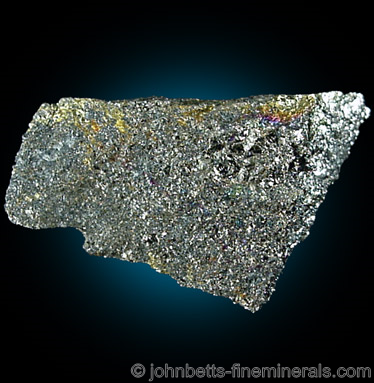The Mineral pentlandite

Pentlandite is an important mineral due to its nickel content, but it rarely forms in interesting specimens for collectors. It usually occurs together with
Pyrrhotite, and may even be intergrown together with it.
Pentlandite is both an individual mineral, and the name of a mineral group. The Pentlandite group is composed of rare
sulfides that have similar
chemical structures, with Pentlandite being the most prominent member of the group. Pentlandite is named in honor of Joseph Barclay Pentland (1797–1873), a natural scientist from Ireland who first identified this mineral.
Chemical Formula
(Fe,Ni)9S8
Color
Silvery yellow to light bronze
Properties
Streak
Bronze to light brown |
Hardness
3.5 - 4 |
Transparency
Opaque |
Specific Gravity
4.6 - 5.1 |
Luster
Metallic |
Cleavage
None. May exhibit parting in one direction. |
Fracture
Conchoidal to uneven |
Tenacity
Brittle |
Uses
Pentlandite is an important ore of nickel.
Noteworthy Localities
Pentlandite is not a common mineral in collections, and few localities have produced specimens of note. The premier locality for this mineral is the Sudbury district in Ontario, Canada, especially at the Frood and Worthington Mines. Other localities include the Copper King Mine, Gold Hill, Boulder Co., Colorado; and the Bushveld Complex in Limpopo Province, South Africa. Cobalt-rich Pentlandite, known as Cobaltpentlandite, is described from the Varislahti Deposit, Karelia, Finland.
Distingushing Similar Minerals
Pentlandite differs from Pyrrhotite and Chalcopyrite by lacking any magnetism, and is usually less yellow than Chalcopyrite.